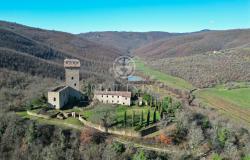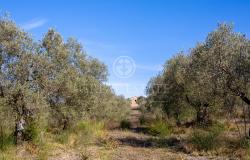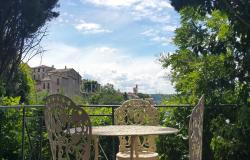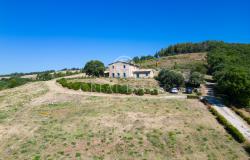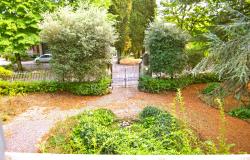It’s the spring show you don’t want to miss: the blooming of colorful flowers on the Piani di Castelluccio plain in Umbria, near Castelluccio di Norcia, taking place every year between May and July.
This is where the prized ‘lenticchia di Castelluccio di Norcia IGP’ is grown. The white flowers of the lentils bloom from May to July, along with several other species of flowers, which are normally considered invasive weeds in cultivated fields where they’re removed using pesticides; whereas, in the Castelluccio plain, pesticides are not used, resulting in that amazing flowers show that is known as ‘La Fiorita,’ a mix of yellow, red, blue and white flowers dotting the plain.
Lentils have been cultivated on the karstic plains of Umbria, at a height of about 1,350 meters above sea level, for centuries, and while the production is small by industrial standards, this particular type of lenticchia, small and full-flavored, easy to cook and preserve, is quite sought after.

The ‘Piani di Castelluccio’ are a karstic-alluvial plateau in the central Apennines located on the Umbrian side of the Sibillini Mountains, within the territory of the municipalities of Norcia near Castelluccio (largely destroyed by the 2016 earthquake that struck central Italy) and the Monti Sibillini National Park. The plateau is the bottom of an ancient Apennine lake, now dried up. There are three ‘piani,’ Pian Grande, Pian Piccolo, and Pian Perduto, covering an area of 15 square kilometers.
The ‘Piani’ are indeed known for the cultivation of Castelluccio lentils, and for the Fiorita, the multi-colored blooming that takes place between May and July, when red poppies, blue cornflowers, yellow daisies and wild mustard, white lentils, tulips and orchids bloom. A natural show that is as much ‘involuntary’ as it is unique.

Here’s a timeline of the Piani di Castelluccio blooming to plan your visit.
Early May - The multi-colored bloom of orchids in the Prati di Ragnolo
Wild orchids are the first flowers to bloom, in early May, on the northern side of the Monti Sibillini National Park, and in particular on the Ragnolo meadows (Prati di Ragnolo). The Sibillini Mountains feature 37 different types of multi-colored orchids, including the very special monkey and bee orchids, which take their names from the animals they resemble in form and color.
End of May - The yellow bloom of mountain tulips
More discreet, but no less fascinating is the blooming of the rare yellow tulip on the Pian Grande. The yellow tulip, whose petals are more pointy and open than those of regular tulips, blooms mainly in mountain meadows and pastures. Included in the list of Umbria’s endangered species and protected by law in many regions of northern Italy, this rare flower blossoms right around Castelluccio di Norcia at the end of May.

Mid-June – The yellow bloom of wild mustard
More yellow color appears on the Pian Grande from mid-June, when the delicate corollas of the wild mustard bloom. The yellow cluster flowers have four petals and release a pleasant fragrance. In late summer, they’ll turn into pods containing seeds.
End of June - The red bloom of poppies
The first red poppies start to appear around mid-May, but they reach their florescence peak at the end of June. A pioneer plant, the poppy is one of the first to populate uncultivated land and may produce up to 400 flowers in a season.

Beginning of July - The blue blossoming of the cornflowers
When the Pian Grande seems to be full with color, here comes another blossoming, the cornflower at the beginning of July, the last to bloom because it needs more light than the other flowers. It’s rare to see this flower in its natural habitat - cereal fields - because it’s considered a weed and is generally eradicated from crops. Not in Castelluccio, where it wonderfully mixes with the white expanses of lentils in bloom and all the other colorful flowers that make this a spring show not to miss.

